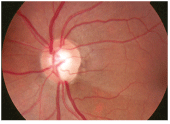 A 65-year-old-man has just been diagnosed with glaucoma. After education about the disease and treatment options, he is prescribed a prostaglandin, which reduces his IOP to an acceptable level. But, the patient expresses distress at its cost and asks if there is a less expensive option that he can use.
A 65-year-old-man has just been diagnosed with glaucoma. After education about the disease and treatment options, he is prescribed a prostaglandin, which reduces his IOP to an acceptable level. But, the patient expresses distress at its cost and asks if there is a less expensive option that he can use.
Immediately, topical beta-blocker therapy comes to mind. One of the greatest advantages of the prostaglandins is their systemic safety profile, especially when compared to that of the beta blockers. But, prior to the development of prostaglandins, we used beta blockers extensively with very few problems. Were the health-related fears associated with beta blockers merely overstated or based only on anecdotal reports and personal communications?
A Revolutionary Medication
Glaucoma management took a giant step forward with the introduction of topical timolol in 1978. Additional beta blockers have been produced since. These have proven extremely successful; but, practitioners concerns about adverse systemic effects in chronic therapy remain.
Systemically, topical beta blockers are introduced into the nasolacrimal ducts and absorbed through the nasal mucosa. Beta blocker-related adverse systemic reactions affecting numerous organ systems have been reported following topical dosing.1

Optic disc notching and nerve fiber layer damage in glaucoma.
Cardiovascular Disease
Congestive heart failure (CHF) has long been thought to contraindicate the use of topical and systemic beta blockers, due to the potential for reduced cardiac contractility and worse cardiac output.2 But, our understanding of the neurohormonal changes that occur in CHF has increased in recent years, challenging this concept.
It is now accepted that beta blockade benefits patients with CHF and reduces chances of mortality. Two main causes of death associated with CHF are pump failure and sudden death secondary to arrhythmia.2 Beta blockers suppress renin production, reducing vascular resistance and improving cardiac output.
Beta blockers also function as anti-arrhythmics, likely by inhibiting
cardiac sympathetic stimulation, reducing the chances of sudden death from arrythmia.2-4 Beta blockade is an accepted therapy for patients with stable class II or III CHF.3,4
Bradycardia is a complication of and contraindication for beta-blocker therapy.2 Beta blockade can result in the slowing of sinus nodal discharge and dose-dependent bradycardia. In most cases, the degree of bradycardia is asymptomatic and does not impact a patients life.2 But, patients who develop symptomatic bradycardia (as manifested by diminished capacity for physical activity or undiagnosed syncope) likely have coexistent pathology of the sinus atrioventricular (AV) node or conduction pathways.2 Beta-blocker therapy may simply unmask these electrophysiological defects, necessitating cardiological evaluation. Beta-blocker therapy can be implemented in patients with pacemakers, following approval from the managing cardiologist.2
Avoid topical beta-blocker therapy in patients who have asymptomatic bradycardia and heart block. Patients with symptomatic bradycardia often present with syncope and dizziness, and are identified prior to ophthalmic examination. But, asymptomatic bradycardia and heart block patients can be identified by checking resting pulse rate prior to induction of beta-blocker therapy. Asymptomatic patients with a resting pulse rate under 55 beats per minute (who have not undergone aerobic conditioning) should be evaluated by a cardiologist. However, patients with normal resting pulse rates and no history of syncope or dizziness are unlikely to experience any serious bradycardia effects from topical beta blockers.
Our current understanding is that patients who have beta blocker-induced heart rate reductions and cardiac output also experience compromised circulation to skeletal muscle and peripheral vascular disease due to the vasodilatory effects of beta blockers. But, controlled studies have not substantiated this theory.5 In one study, researchers found no impairment in endurance or peripheral blood flow, or symptoms of skeletal muscle claudication with use of systemic beta blockers vs. placebo. So, topical beta-blocker therapy may be acceptable in patients with mild to moderate peripheral vascular disease.5
Pulmonary Disease
Several published cases have reported fatal bronchospasm in asthmatic patients resulting from the use of topical beta blockers.6,7 Airway resistance occurs at all levels during an asthma attack, and patients with asthma may demonstrate hyper-responsiveness to stimuli that do not affect non-asthmatic individuals.2 Bronchospasm induced by topical beta blockers likely occurs in asthmatic patients due to both beta blockade and direct irritation to the bronchial tree from nasolacrimal drainage.
Pulmonary constriction in asthmatic attacks is unpredictable, and even low doses of beta blockers have demonstrated the ability to induce an attack.2
Acute administration of beta blockers to asthmatic patients can provoke such changes, but it is not clear if they occur with chronic usage.2 So, if patients with asthma successfully withstand a topical beta-blocker challenge, they will likely have no long-term effects.2
But, patients who have chronic obstructive pulmonary disease (COPD) do not show the same degree of bronchial hyper-reactivity as asthmatic patients. Topical beta blockers may cause fewer problems in patients with COPD. But, it may be best to prescribe medications other than beta blockers for patients who have asthma and COPD with a reactive airway component. Patients with pulmonary issues, such as infectious bronchitis, viral upper respiratory infection or non-asthmatic cough, can safely use topical beta blockers for glaucoma therapy.2
Diabetes
In diabetic hypoglycemia, the adrenal gland releases epinephrine and the pancreas releases glucagon. This leads to hepatic glycogenolysis and gluconeogenesis, two attempts to restore normal serum glucose levels. Tachycardia, palpitations and tremors signal hypoglycemia.8 Beta blockers can blunt these sympathetic responses, important signs of hypoglycemia, and may also interfere with compensatory elevation of plasma glucose levels. So, beta blockers tend to be contraindicated in patients with diabetes. At present, however, there is no conclusive evidence about the effects of topical beta-blocker therapy on the intrinsic recovery of plasma glucose levels in patients with diabetes. Patients in an advanced stage of diabetic disease may be at greater risk from beta blocker-induced prolongation of hypoglycemia. But, topical beta blockers are quite safe for the vast majority of patients with diabetes.2
Lipid Metabolism
Systemic beta blockers have been reported to reduce high-density lipoprotein cholesterol levels and raise triglycerides by reducing lipoprotein lipase activity, which hydrolyzes endogenously produced triglycerides.9 Many of the studies that lead to these conclusions, however, were either poorly designed or of short duration. One notes that the adverse effects of systemic beta blockers on lipids may be minor and lessen over time.10 These are impacted both by cardioselectivity and the presence of intrinsic sympathomimetic activity, which allows for maintenance of lipoprotein lipase activity.9,11 Another study found a reduced effect on lipid metabolism by carteolol (with intrinsic sympathetic activity) when compared to timolol.12 So, topical beta blockers, especially those with intrinsic sympathomimetic activity, can be confidently used on patients with altered lipid metabolism.
Central Nervous System Effects
Beta blockers may cross the blood-brain barrier and affect the central nervous system.2 The most commonly reported effect: clinical depression.2 But, there is little compelling evidence that beta blockers induce depression; most reports consist of isolated cases where other variables were not considered.2
Of the 10 studies that assessed the relationship between beta blockade and depression using a standardized rating scale for depression, nine found no association. The one study that found a positive relationship had randomized only 20 patients and administered beta blockers for only four days.2 So, there is no reason to expect that topical beta-blocker therapy will induce depression in an otherwise normal individual. The impact of beta blockers in patients that already suffer from depression, however, is presently unknown.
Sexual Dysfunction
Scant evidence from placebo-controlled trials links systemic beta-blocker therapy with sexual dysfunction. Prospective, randomized, placebo-controlled clinical trials have failed to identify an association between systemic beta-blocker therapy and sexual dysfunction.13 Currently, there appears to be no reason to withhold topical beta-blocker therapy in patients for fear of inducing sexual dysfunction, even if they have a pre-existing history.
Specific contraindications to the use of topical beta blockers exist, but it appears that many of the propagated fears about this class of medication stem from anecdotal case reports, not evidence-based sources. These drugs are actually quite safe for the majority of patients.2
Still, be aware of potential complications and unusual systemic complaints in patients using beta-blocker therapy. Always obtain a thorough health history, check in-office pulse rate, and refer for medical evaluation when indicated prior to initiating topical beta blockers.
Drs. Sowka and Kabat thank Andrew Gurwood, O.D., for suggesting this months topic.
1. Vander Zanden JA, Valuck RJ, Bunch CL, et al. Systemic adverse effects of ophthalmic beta-blockers. Ann Pharmacother 2001 Dec;35(12):1633-7.
2. Lama PJ. Systemic adverse effects of beta-adrenergic blockers: an evidence-based assessment. Am J Ophthalmol 2002 Nov;134(5):749-60.
3. Teerlink JR, Massie BM. The role of beta-blockers in preventing sudden death in heart failure. J Card Fail 2000 Jun;6(2 Suppl 1):25-33.
4. Teerlink JR, Massie BM. Beta-adrenergic blocker mortality trials in congestive heart failure. Am J Cardiol 1999 Nov 4;84(9A):94R-102R.
5. Radack K, Deck C. Beta-adrenergic blocker therapy does not worsen intermittent claudication in subjects with peripheral arterial disease. A meta-analysis of randomized controlled trials. Arch Intern Med 1991 Sep;151(9):1769-76.
6. Odeh M, Oliven A, Bassan H. Timolol eyedrop-induced fatal bronchospasm in an asthmatic patient. J Fam Pract 1991 Jan;32(1):97-8.
7. Taniguchi M, Kino H, Mori M, et al. A case of fatal asthma induced by timolol eye-drop. Nihon Kyobu Shikkan Gakkai Zasshi 1990 Jan;28(1):156-9.
8. Sherwin RS. Diabetes Mellitus. In. Bennett JC,
9. Madu EC, Reddy RC, Madu AN, et al. Review: the effects of antihypertensive agents on serum lipids. Am J Med Sci 1996 Aug;312(2):76-84.
10. Lakshman MR, Reda DJ, Materson BJ, et al. Diuretics and beta-blockers do not have adverse effects at 1 year on plasma lipid and lipoprotein profiles in men with hypertension. Department of Veterans Affairs Cooperative Study Group on Antihypertensive Agents. Arch Intern Med 1999 Mar 22;159(6):551-8.
11. Durrington PN, Brownlee WC, Large DM. Short-term effects of beta-adrenoceptor blocking drugs with and without cardioselectivity and intrinsic sympathomimetic activity on lipoprotein metabolism in hypertriglyceridaemic patients and in normal men. Clin Sci (Lond) 1985 Dec;69(6):713-9.
12. Freedman SF, Freedman NJ, Shields MB, et al. Effects of ocular carteolol and timolol on plasma high-density lipoprotein cholesterol level. Am J Ophthalmol 1993 Nov 15;116(5):600-11.
13. Grimm RH Jr, Grandits GA, Prineas RJ, et al. Long-term effects on sexual function of five antihypertensive drugs and nutritional hygienic treatment in hypertensive men and women. Treatment of Mild Hypertension Study (TOMHS). Hypertension 1997 Jan;29(1 Pt 1):8-14.

